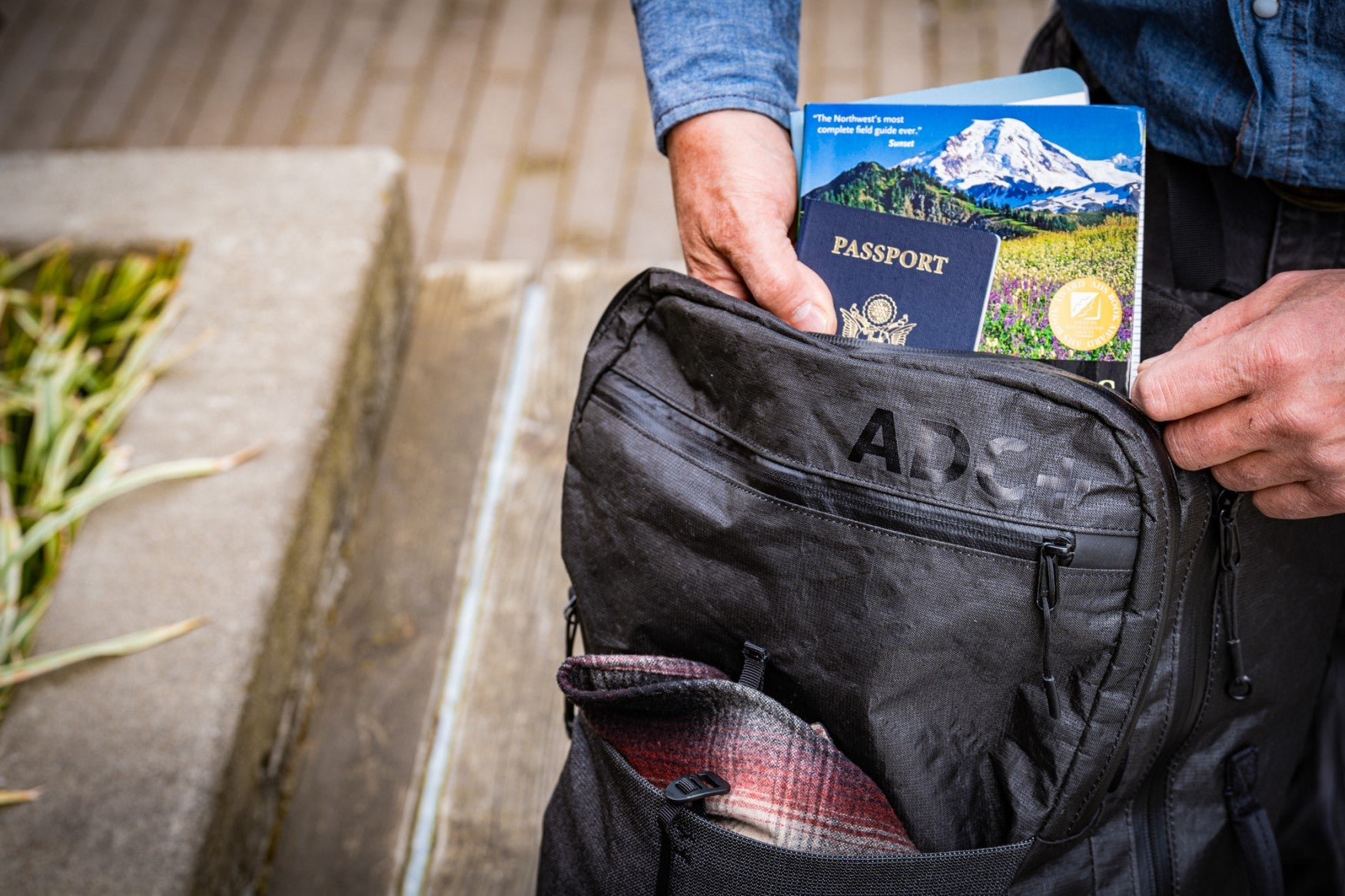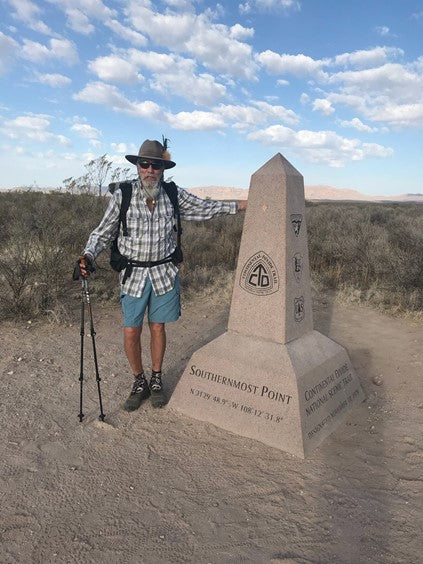A herd of wild vicuñas bolt by, seemingly startled by a flock of Andean geese just above, and I wonder if the scene in front of me: savage glaciated peaks, abundant wildlife, and feeling like we can almost touch the nearby summits, is just an altitude-induced illusion. After all, we’re standing at 15,950 feet, right at a pass called Siula Punta, just a few days into the grand circuit of Peru’s Cordillera Huayhuash. It’s my second time in a decade doing this fabulous hike, this time bringing my wife along for the ride, and in a lifetime of trekking, hiking, and climbing all over the planet, Huayhuash still remains my favorite trek in the entire world.
For folks who haven’t been here, a mention of the name of this wildly fantastic trek usually elicits responses of “Why What?,” although actually today’s thru-hikers ought to easily remember the name, as it sounds pretty much like “why wash?,” seemingly a mantra for Hiker Trash these days.

The Cordillera Huayhuash is an 8-12 day circuit trek around some of the highest and most stunning mountain scenery not only in the Andes, but anywhere on the planet. Over 80 miles, you cross nine passes of between 14,000 and 16,700 feet, touching glacier tongues, crossing wild rivers, and traversing ridges with endless vistas of the best of the Andes. Huayhuash used to be a remote and untouched secret, but noted mountaineer Joe Simpson’s famous near-death experience here, detailed in the award-winning book (and subsequent popular movie) Touching the Void, put Huayhuash on the world trekking map. Yet even today, it still sees a fraction of the visitors compared to say the Everest Base Camp or Annapurna treks in Nepal, far less trekkers than the more northern Cordillera Blanca treks, and as a couple of longtime Peruvian travelers and trekkers told me, “The Inca Trail is not why people should be coming to South America, but for Huayhuash.”

You have to carry all your food and equipment on this trek, as there is only one village with the most basic of resupplies, which doesn’t come until at least a week into the hike, and given the altitudes involved, it’s far better to hire a mule and arriero (muleteer) to carry enough to eat, as well as to be able to enjoy the epic views. While carrying even an ultralight pack might be second nature at 10,000 feet, bumping that up to 15,000-plus turns 30 pounds into seemingly double, and the folks we met who were carting all their own gear most definitely were suffering.
The majority of trekkers who do make it here during the summer high season tend to join guided groups, which might take all the planning out of one’s hands, but also means that one follows a pre-set schedule, with almost all the groups now cutting the trek time down to eight days in order to offer more budget options, which means they skip the former classic route around Huayhuash, which includes a gorgeous hot spring overnight, as well as opportunities to go up to Siula Grande Base Camp, site of the Joe Simpson ordeal. This makes the classic route even better, and indeed, my wife and I saw almost no other hikers once we left the regular group path.

Yerupajá (Peru’s second highest peak at 6635m) and Siula Grande (Joe Simpson’s famed peak) are visible on the third day of the trek, from a lakeside camp at Laguna Carhuacocha, where avalanches and icefall rumblings are a daily occurrence into the lake’s far end. Each campsite here is managed by one of the eight indigenous communities that inhabit the Huayhuash circuit, with trekkers needing to pay a campsite fee, and this management system has made the local communities more amenable to tourism, as well as ensured that trash is removed, trekker safety made a concern, and even flush toilets have been installed in some of the bigger camps. At Carhuacocha, we even were offered fresh trout and cold beer to supplement our backpacker meals, but on only the third day out, it seemed a bit early for such luxuries.
Our fourth day out lead us up a steep path that crossed a terminal moraine ridge, climbed a steep valley full of wild daisy and cacti, and traveled over surreal hardened green lichen beds of llareta (Azorella compacta). The mules take a lower route around on this section, but unless the altitude has played havoc with you, you don’t want to miss this hard climb, as the views of the glaciers on Yerupajá and Siula Grande are mesmerizing, with constant calving and thundering icefalls putting on a show throughout the day.

After 5-6 days of walking, we reached one of the treats of the mountain circuit. The Guñoc Hot Springs flow out of the Rio Pumarini and the community here has built several hot swimming pools, which we had entirely to ourselves, save for a local who treks beer and soda up on his mule from a community down valley each afternoon, well worth the extra few Peruvian soles transportation fee. We spent the afternoon and night in steaming bliss, soaking away all the grime, dust, and sore muscles of the past five days.
Leaving the hot springs at sunrise, we did one of the steepest and most dramatic ascents of the Huayhuash trek, up and over Paso Cuyoc, which at 16,665 feet is the second highest pass on the route. The ice dome of Mount Cuyoc is only another 1700 feet higher here, and like many of the peaks on this route, feels far more in-your-face and real than compared with treks in Nepal, where even at 16,000 feet, many of the mountains still tower seemingly miles away. The trail plunges down from here on scree, dirt, and small stones that are akin to walking on marbles, and then starts its vicious ascent all over again, ascending up to 16,700 feet, the highest point on route, to Paso Santa Rosa/Jurau, where one can see the peaks of Carnicero, Siula Grande, Yerupajá, Rasac, and Serapo all rising above Laguna Jurau in one of the most captivating mountain panoramas anywhere in the Andes.

After a week of hiking, we reached the small hamlet of Huyallapa, where a couple of small shops had gas canisters, vegetables, and a few dried/canned goods for sale, as well as even providing a couple of small family-run lodgings called hospedajes, where $5 gets you a basic comfortable room and a hot shower. Huayllapa is down in a valley at under 12,000 feet, so it is warm, even uncomfortably hot, as you’ve got to regain all the elevation you’ve lost climbing up out of here, balancing along the trail which follows a manmade irrigation canal.
Climbing all the way back up, at just shy of 15,000 feet, we made camp at Gashpapampa, a bitterly cold spot that isn’t anywhere near as inviting as elsewhere we’d been, but was pretty much the only option, given that after this the trail rises and crosses a stunning long ridge, which gives the best views of the whole west side of the Huayhuash circuit, if not perhaps the best views of the whole walk, offering sweeping views of turquoise lakes and all the high peaks of the route, seen from the opposite side, showing off their west faces.

We dropped down to yet another magnificent emerald lake, Laguna Jahuacocha, managed by the Llamac community, where a local’s offer of trout and beer this time did not go unanswered. We still had a day’s walk to complete the circuit, but laying in our tent at night, were already contemplating returning here again someday, as there are few walks in the world that can rival the star-power of Huayhuash.
About the Author
 Dave Stamboulis is a true world nomad. Born in Greece, raised in San Francisco, and for the last 30 years, has called Japan, Nepal, and Thailand home. Dave spent 7 years bicycling 45,000 kilometers around the world, subsequently writing an award-winning book (Odysseus’ Last Stand) that launched a career as a travel writer and photographer. He took up mountaineering, trekking and climbing in every major mountain range on the planet, from the Himalayas to the Andes, Patagonia, the Alps, the Ruwenzoris, the Pamirs, and other off-the-beaten-path destinations.
Dave Stamboulis is a true world nomad. Born in Greece, raised in San Francisco, and for the last 30 years, has called Japan, Nepal, and Thailand home. Dave spent 7 years bicycling 45,000 kilometers around the world, subsequently writing an award-winning book (Odysseus’ Last Stand) that launched a career as a travel writer and photographer. He took up mountaineering, trekking and climbing in every major mountain range on the planet, from the Himalayas to the Andes, Patagonia, the Alps, the Ruwenzoris, the Pamirs, and other off-the-beaten-path destinations.
Dave and his Filipina wife Raquel were spending three months in Colombia and decided to jump over to Cuba for a two-week trip when Covid broke out, forcing them to abandon all their gear in closed Colombia and go to the U.S. They replaced all their old heavyweight equipment with new lightweight gear, and decided they better go test it out, first doing the Colorado Trail, followed by the Arizona Trail. 2022 finds them based in Guatemala, preparing for thru-hike of the PCT, and they still have a bucket list of adventuresome walks lined up for the future, including the Balkan Trail, the TransCaucasus, and the Corsica High Route. When not on trail, Dave spends way too much time being pickier about which IPA he’ll drink, and hopelessly trying to lighten his load.











Leave a comment
This site is protected by hCaptcha and the hCaptcha Privacy Policy and Terms of Service apply.